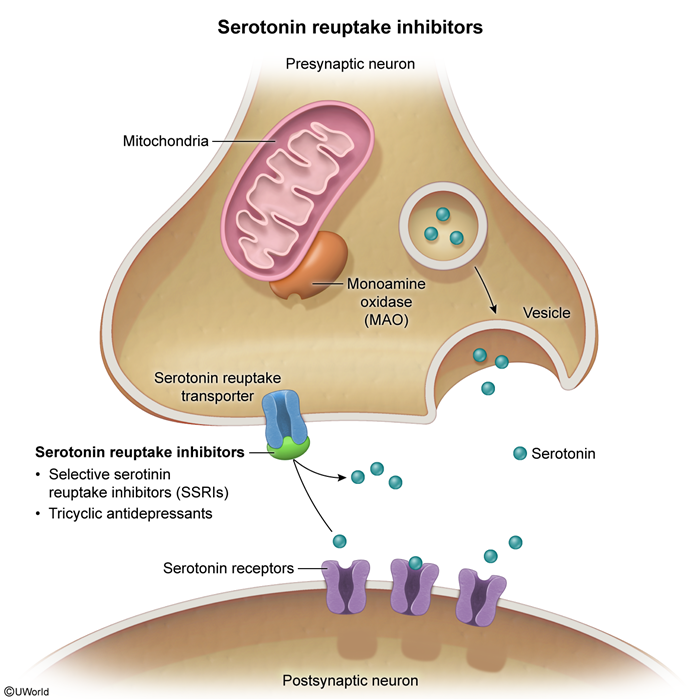Selective Serotonin Reuptake Inhibitors (SSRIs)
Article Sections
Introduction
Selective serotonin reuptake inhibitors (SSRIs) prevent presynaptic reuptake of serotonin in the synaptic cleft. SSRIs are first-line agents for a variety of psychiatric conditions due to their relative tolerability and safety profile compared to other antidepressant classes.
Mechanism of action
In the central nervous system (CNS), serotonergic (serotonin-releasing) neurons are primarily found in the raphe nuclei of the brainstem. The raphe nuclei are located in the midbrain, pons, and medulla. Axons from these cell bodies project widely throughout the CNS to synapse on structures such as the cerebral cortex, thalamus, hypothalamus, cerebellum, hippocampus, and spinal cord. These neurons play a role in the sleep-wake cycle, anxiety, mood, psychosis, sexuality, eating behavior, and impulsivity.
SSRIs inhibit the serotonin transporter (SERT) pump, which is normally responsible for transporting serotonin out of the synaptic cleft back into the presynaptic neuron (
Continue Learning with UWorld
Get the full Selective Serotonin Reuptake Inhibitors (SSRIs) article plus rich visuals, real-world cases, and in-depth insights from medical experts, all available through the UWorld Medical Library.
Figures

